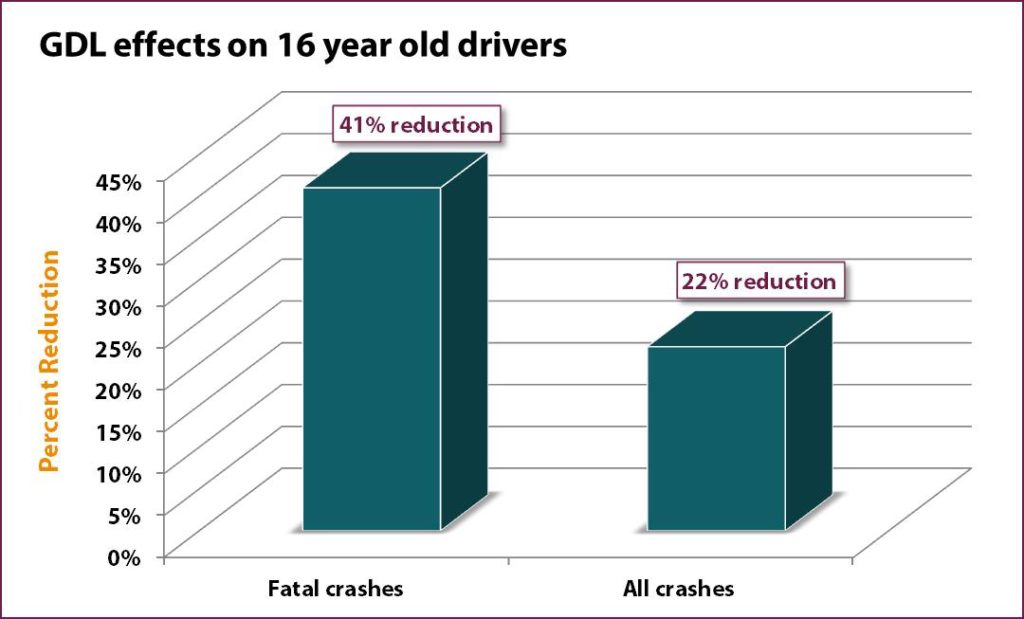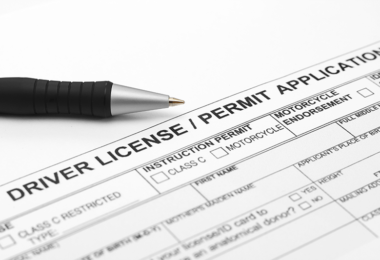Effectiveness of GDL programs
From 1975 to 2015, there has been a 69% decline in the number of teenagers (age 13 to 19) who have died in road crashes (in 1975, there were 8,748 deaths compared to 2,715 in 2015).
- Between 1996, when the first three-stage graduated driver licensing program was implemented in the United States, and 2015, teenage crash deaths declined by 53 percent (from 5,819 to 2,715).1
But, the young driver problem remains a top priority for road safety professionals:
- 1,717 young drivers (age 15 to 20 years) were killed in road crashes in 2014; and,
- the number of fatal crashes in this age group remains excessively high for the miles travelled.2
Each state in the U.S. has adopted some elements of graduated driver licensing, and other countries such as Canada, Australia, Israel, and New Zealand have also implemented features of graduated licensing for young and novice drivers.
Teenage licensing laws have the largest impact on 16-year-old drivers:
- The effectiveness of GDL programs can be observed through marked reductions in the number of young and novice driver crashes.
- There has been a 41% reduction in their rate of fatal crash rate.3
- There has been a 22% reduction in their rate of overall crashes.4

There is evidence demonstrating the crash reduction benefits of GDL programs for newly licensed drivers aged 17 but the effects are smaller than at age 16. GDL effects on those age 18 and 19 are less clear as the evidence is generally mixed. This is because:
- In most states, young drivers aged 18 and older are not subject to GDL requirements.
- Some teenagers delay licensing until they are 18 in order to avoid these restrictions.
- National surveys have indicated that as many as one in three people beginning the licensing process in the United States are over the age of 18.
- Furthermore, some states make it possible to graduate from the GDL program before the age of 18.5
- Data on the effects of GDL programs for those aged 17 show reductions in overall crashes (11%) and fatal crashes (12%).4
- Recent evidence suggests that there is not a negative effect of GDL on the crash rates for 18 and 19 year-olds although crash effects are controversial.6
Conversely, other countries, such as Canada, Australia and New Zealand, apply GDL requirements to all older novice drivers, or novice drivers up to a certain age (generally to the age of 25). The rational for this policy is that novices of all ages are at risk because of their inexperience, and GDL is a system designed to deal with inexperience, not age per se. In Canada, the number of fatally injured drivers per 100,000 population aged 16-19 year old represented 6.5 % of the drivers killed in 2012, and those drivers 20 years and older were 5.5% of all drivers killed.





